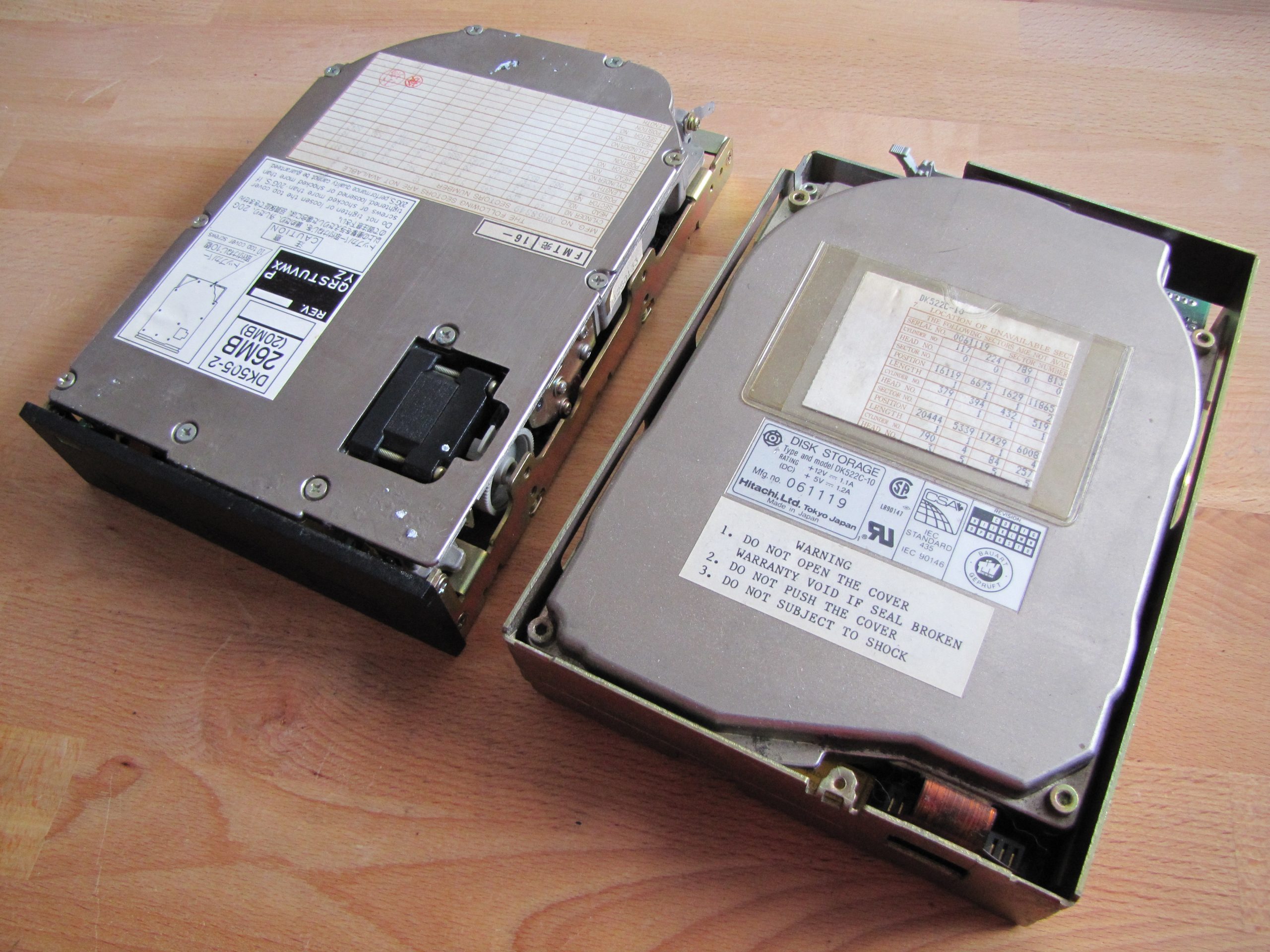Hitachi’s model numbers for their disk drive division have been renowned for being reasonably well structured in the modern era, however when looking back at their pre-IBM merger days, the story is quite a bit different. After changing their long traditional label format, things became a lot clearer, but this means that drives manufactured by Hitachi natively before 2004 can sometimes be quite ambiguous.

After a lot of research, a few conclusions can be made as to how their model number formatting is structured, alongside what it details. I’ve created the following two charts, (one in tall format, one in wide) which hopefully makes the whole picture a little bit clearer.
These charts will be updated over time, as more conclusions are made. It’s important to take this information with a grain of salt, as none of this documentation can be confirmed, as Hitachi never released the exact model identification methodology.
Tall Formatting
Click on image for full-screen view.
Wide Formatting
Click on image for full-screen view.
Revision 1.2, released on 2023-03-16.
A few key points to take into consideration from above:
- Drives such as the DK505-2 fit the labelling specification above, but contain a 0 for character 2. It is currently theorised this refers to a Tokico-rebrand product, being how Hitachi began in the drive business in the 1980’s. This is unconfirmed.
- A for character 4 refers primarily to drives running at 4,200 RPM, but Hitachi documentation suggests drives may run between 4,000 and 4,5000 RPM whilst retaining this identifier.
- C for character 4 most commonly refers to 3,600 RPM drives.
- SCSI reference formatting currently has a few unknown identifiers, these being L and M. This post will be updated once concrete patterns have been established.

